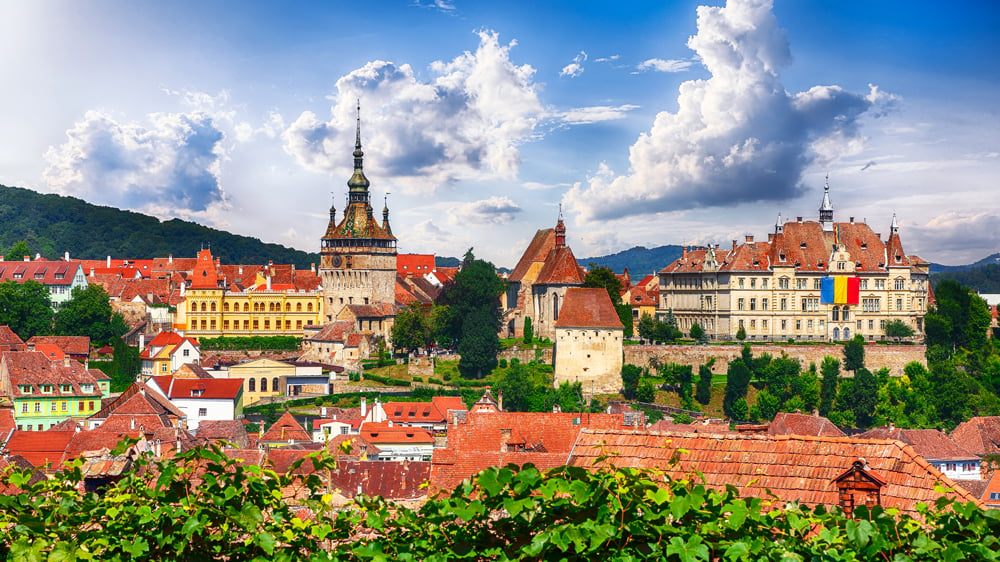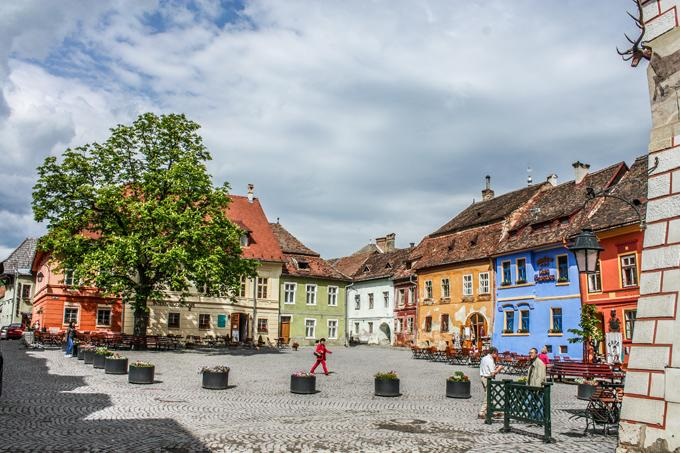Sighisoara, Romania is a medieval gem of Eastern Europe. It was one of the seven cities that the Transylvanian Saxons built up after they settled in the region during the 12th century (Condrea). Sighisoara is extremely special to Romania because "Eastern Europe doesn't have a ton of villages still in their original Medieval state as a lot of the homes in the region had thatched roofs in the Middle Ages which didn't survive time and war" (Top 25 Cities). The legends or myths that come out of Sighisoara are some of the best known throughout the world. The man who inspired Dracula, Vlad the Impaler, was born in the Citadel Square in 1431. Vlad is famous for being a cruel ruler by impaling thousands of people on stakes. Some say he would dine among the field of dead and drink the blood of his victims but this has never been proven. The tale of Bram Stoker's Dracula was based on Vlad's sadistic personality and regime. Sighisoara has two medieval castles: Peles and Bran. Bran Castle was said to be where Dracula lived even though Vlad himself had little connection to it. It is because of these dark tales that Sighisoara and the rest of Transylvania has a stereotype of being filled with gloom and misery. While Sighisoara might have a dark history under Vlad the Impaler, it was nothing like that in the 12th and 13th centuries. Sighisoara still has many of its medieval showings and it is a "...perfect terrain for those desirous of journeying into a fantastically well-preserved twilight zone of European history" (Tayler). To fully understand the importance of Sighisoara we must not just look at its towers and castles but also its role in the Commercial Revolution as discussed in class.

At the end of the 13th century, "Sighisoara rapidly developed into a powerful economic and commercial center due to its many craftsmen and tradesmen that fortified the settlement..." (Condrea). They built many fortifications for the center due to the threat of the Ottoman Empire. Fourteen towers, each for a separate guild and five bastions were built by the craftsmen. Each guild was meant to take care of their individual tower in times of peace and use it to defend the city in times of war, for example, there was the "Blacksmiths' Tower" and the "Goldsmiths' Tower" (Condrea). Sighisoara, along with many other European cities, had an urban society that depended on craftsmen and guilds as the Commercial Revolution spread across Europe. Sighisoara was in a perfect geographical position to benefit by growing its urban population and increase its attractivity to merchants (Condrea). Romania is between the powerful trade cities of Western Europe and the empires of Asia. As discussed in class, there were many trade routes across the two continents by both land and sea. The economy of Sighisoara benefited from both sides as Western Europe goods were brought through to the east and vice versa. Sighisoara's city square was were many merchants would sell and trade their goods to the public. The city Sighisoara was the perfect medieval 13th-century city. It had fortifications, a merchant market, and guilds to support its citizens. It may be overlooked because of the Transylvanian stereotype and people's fears of Dracula but it is one of the best medieval cities still alive today.

Works Cited
Condrea, Diana. "Sighisoara: The Outstanding Citadel of Saxon Transylvania." Uncover Romania, Accessed 15 October 2019, https://www.uncover-romania.com/attractions/unesco-heritage-romania/sighisoara/.
Tayler, Jeffrey. "Transylvania Today: This part of the world isn't just for Dracula buffs." The Atlantic, June 1997, https://www.theatlantic.com/magazine/archive/1997/06/transylvania-today/304684/.
"Top 25 Medieval Cities in Europe." Big Boy Travel, Accessed 15 October 2019, https://www.bigboytravel.com/europe/topmedievalcities/.



To think that such an interesting town like this get defined by a single somewhat mythical character is really interesting. It seems to be a theme with many medieval cities to have them mostly defined by a single character or thing.
ReplyDeleteThis is a great post linking medieval times to the present day. I think it is interesting that vampire movies picture the home of Dracula to be so dark and gloomy, given the fact that Sighisoara is such a beautiful and colorful medieval city. Given its location and ability to provide trade to the rest of Europe from Asia, I wonder if Sighisoara has more Asian cultural characteristics than others of medieval Europe?
ReplyDeleteAs much as I love the fantastical and the supernatural, it's actually sort of sad that the town's only really known for Dracula horror stories and the grim subject of Vlad the Impaler. Still, it's nice to know the birthplace of the real-life Dracula. Its also interesting how the Bran Castle the Dracula myth is a part of also had pretty much nothing to do with Vlad.
ReplyDelete